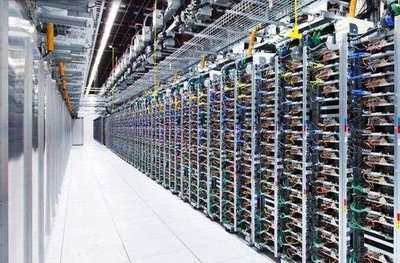The year is 2025. The digital landscape hums with the relentless energy of decentralized finance. Bitcoin, no longer a rebellious upstart, is a seasoned veteran, a digital gold reserve anchoring the burgeoning crypto economy. Ethereum, having successfully navigated its transition to Proof-of-Stake, continues to power a universe of decentralized applications. And Dogecoin? Well, Dogecoin thrives, a testament to the enduring power of community and meme magic, perhaps even integrated into micro-transactions on unexpected platforms.

But beneath the surface of mainstream adoption lies a relentless race: the evolution of crypto mining. 2025 isn’t about brute force. It’s about efficiency, sustainability, and adaptability. Gone are the days of sprawling, energy-guzzling warehouses. The future belongs to those who can optimize their operations and anticipate the ever-shifting tides of blockchain technology.
Advanced mining techniques are no longer optional; they are essential for survival. We’re talking about immersion cooling, drastically reducing energy consumption and extending the lifespan of mining rigs. We’re delving into FPGA (Field-Programmable Gate Array) mining, offering a sweet spot between the rigidity of ASICs (Application-Specific Integrated Circuits) and the versatility of GPUs (Graphics Processing Units), allowing miners to quickly adapt to new algorithms and coin types. Think of it as the Swiss Army knife of crypto mining.
And then there’s the rise of mobile mining. While not as powerful as traditional methods, the collective processing power of millions of smartphones, intelligently harnessed and aggregated, presents a compelling alternative, especially for newer, less computationally intensive cryptocurrencies. It democratizes the mining process, turning everyday users into active participants in the network’s security.
Mining farm strategies have also undergone a radical transformation. The focus is on geographic diversification, mitigating geopolitical risks and taking advantage of regional energy surpluses. Strategic partnerships with renewable energy providers are not just about public relations; they are a crucial component of long-term profitability and environmental responsibility. Imagine solar-powered mining farms nestled in the deserts, or wind turbine-powered operations humming along coastlines, transforming renewable energy into digital currency.
The profitability landscape is equally dynamic. Bitcoin mining, while still lucrative, is increasingly dominated by large-scale industrial operations. Altcoins, with their varying levels of difficulty and market capitalization, offer opportunities for smaller players to carve out niches. The key is to identify undervalued projects with strong fundamentals and scalable mining algorithms. Smart miners are diversifying their portfolios, hedging their bets across a range of cryptocurrencies and constantly monitoring network conditions to maximize their returns.
Mining rig technology continues to push the boundaries of performance. Expect to see further miniaturization, increased hash rates, and reduced power consumption. Quantum computing, while still in its nascent stages, looms on the horizon, potentially disrupting the entire cryptographic landscape. Developing quantum-resistant algorithms and exploring post-quantum cryptography will be paramount for ensuring the long-term security and viability of cryptocurrencies.
But the hardware is only half the battle. Sophisticated software solutions are equally critical. Automated monitoring and management tools, powered by artificial intelligence, optimize mining operations in real-time, adjusting parameters based on network difficulty, electricity prices, and market fluctuations. Predictive analytics identify potential hardware failures before they occur, minimizing downtime and maximizing uptime. The future of mining is data-driven, leveraging information to make informed decisions and stay ahead of the competition.
Cryptocurrency exchanges are adapting too. They are increasingly offering advanced mining services, providing institutional investors with access to sophisticated infrastructure and expertise. They are also exploring innovative financial products, such as mining derivatives, allowing investors to hedge against price volatility and manage their risk exposure. The lines between mining and trading are blurring, creating new opportunities for arbitrage and profit generation.
Dogecoin’s survival hinges on continued community support and innovative use cases. Perhaps we’ll see it used as the native currency within metaverse environments, or integrated into decentralized social media platforms. The memecoin’s future is unpredictable, but its resilience and adaptability have proven its staying power.

Ultimately, 2025’s crypto wave is driven by a convergence of technological advancements, strategic adaptations, and a deeper understanding of the underlying economic principles. It’s a landscape that rewards innovation, resilience, and a willingness to embrace change. The miners who thrive will be those who can master these advanced techniques and navigate the complexities of the ever-evolving crypto ecosystem.
This article explores the innovative mining techniques anticipated for 2025, spotlighting advanced technologies that promise to revolutionize crypto extraction. It analyzes trends in energy efficiency, algorithm advancements, and the potential for sustainable crypto practices. A crucial read for enthusiasts eager to navigate the dynamic landscape of digital currencies.